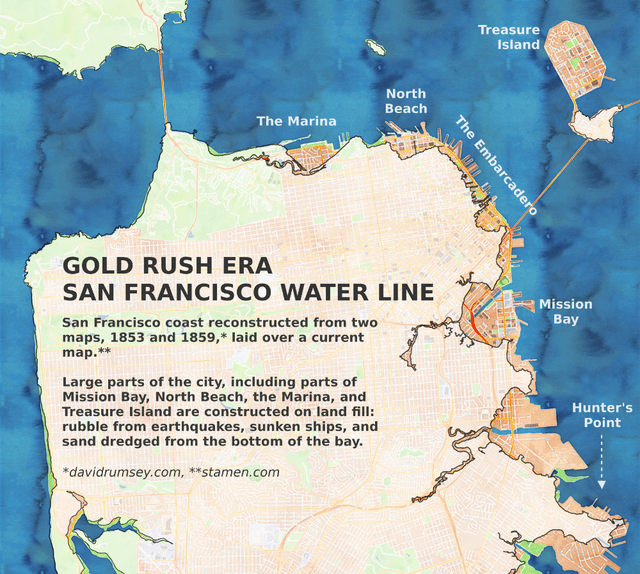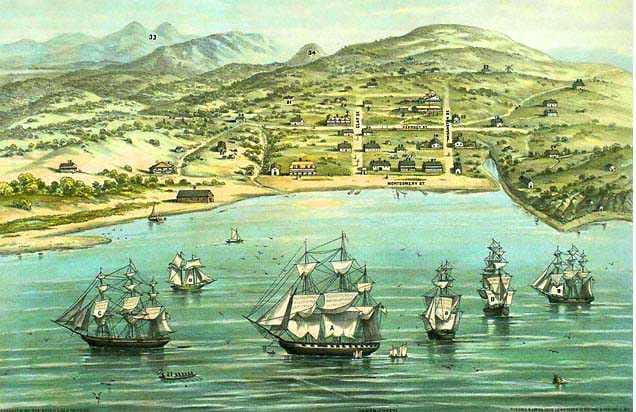
Rosie Cima, Priceonomics; Map sources: Stamen, David Rumsey Collection
The city of San Francisco is geographically constrained to the tip of a peninsula, measuring appproximately seven miles wide by seven miles long. These physical boundaries are often implicated in conversation about the city’s current housing crisis, especially by proponents of vertical expansion. But for a lot of San Francisco’s history, when San Franciscans wanted more real estate they favored horizontal expansion: they simply made more land.

The tiny town of Yerba Buena, which would later become San Francisco, ended up expanding in every direction possible
The Embarcadero started to fill in as early as the 1840s and 50s, as wharfs and piers were built farther and farther into the water, their bases creeped forward, and ships were abandoned. One ship — the Niantic, was famously beached near what is now the corner of Clay and Montgomery, after most of her crew deserted to go gold mining. Someone adopted the ship, cut a door in it’s hull, ran a plank from the shore, and converted it into a hotel, warehouse, and store. It’s been buried, forgotten, excavated, restored, and buried again several times in the intervening century-and-a-half — the last time being during the construction of the Transamerica building.
Mission Bay was a gulf of water surrounded by uninhabitable marsh, which many used as a dump, some in hopes of drying it out into viable real estate. It hit its tipping point after the catastrophic earthquake of 1906. The quake and subsequent fire had left the city’s infrastructure in ruin, and much of the wreckage went into the bay and surrounding marshland, until there was little enough bay and marshland that the region was suitable for development.
The federal government built most of Treasure Island in the 1930s out of quarried rock, sand dredged from the bottom of the bay, and topsoil.
There are some major trade-offs to making your own land. For one, you can’t go very far in the San Francisco Bay Area without being reminded that its wetlands and many of their flora and fauna are endangered. For another, as even the earliest builders discovered, landfill fares much worse in an earthquake than bedrock. This means that while San Francisco is by no means the only city in the world to build on land fill (also called infill and reclaimed land), its


